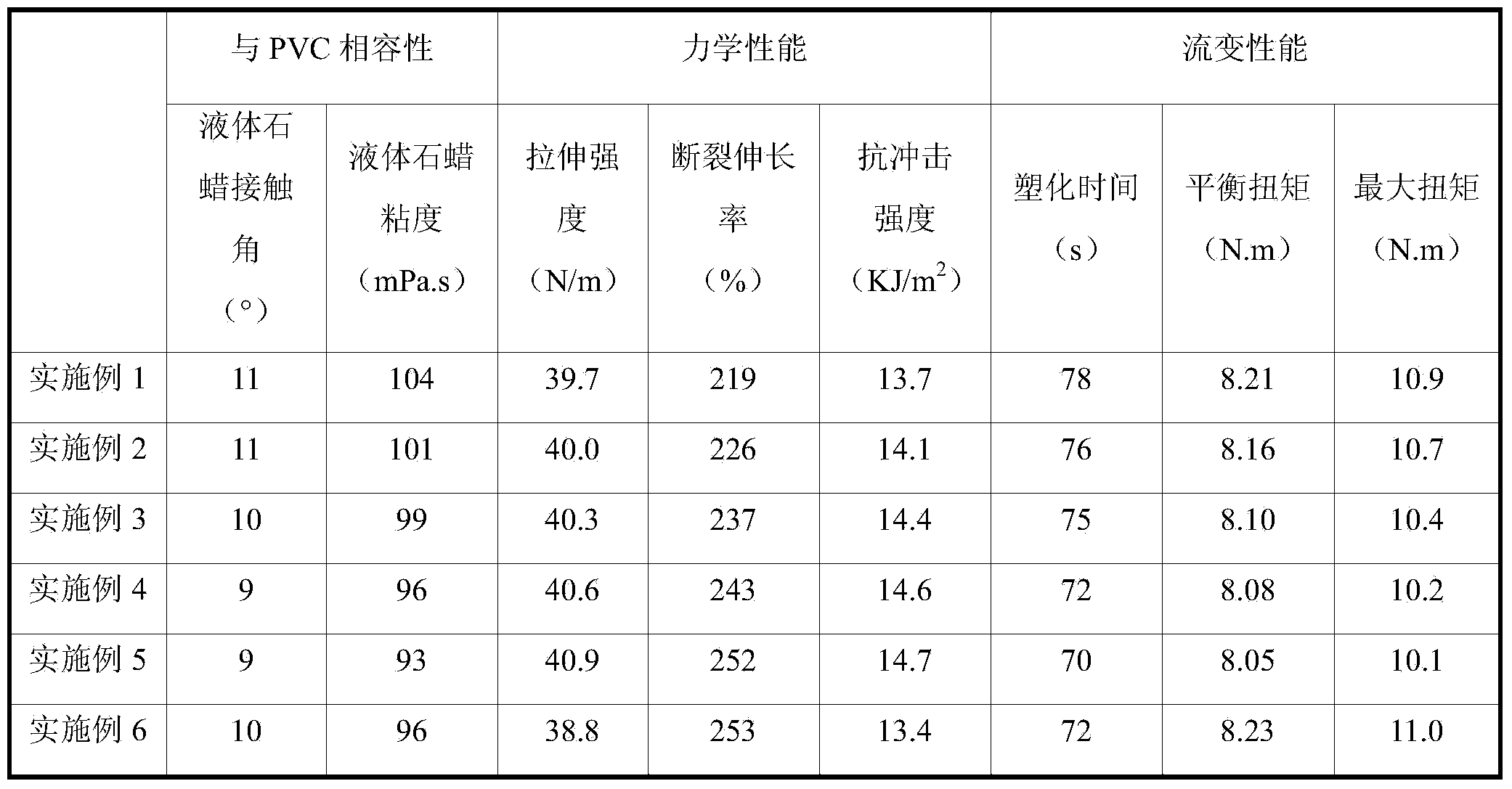Method for modifying nano calcium carbonate through aluminum titanate and preparation method of PVC plastics
A technology of nano-calcium carbonate and aluminum titanate, which is applied in the treatment of fibrous fillers and dyed low-molecular-weight organic compounds, can solve the problems of poor compatibility of nano-calcium carbonate and not greatly improved rheological properties, and achieve Improve the mechanical properties and rheological properties, strong binding force, enhance the effect of lipophilicity
- Summary
- Abstract
- Description
- Claims
- Application Information
AI Technical Summary
Problems solved by technology
Method used
Image
Examples
Embodiment 1
[0024] Add nano-calcium carbonate with an average particle size of 30nm into a large flask filled with deionized water, place the flask in a constant temperature water bath, install a high-speed mixer for the flask, and insert the stirring rod to a suitable position below the liquid level. Control the water bath temperature to 60°C. Start the stirrer, the control speed is 2500rpm. After stirring for 5 minutes, add 0.4% aluminum titanate accounting for the mass of nano-calcium carbonate, adjust the rotation speed to 1000 rpm, and stir for 60 minutes to obtain a calcium carbonate dispersion. The average particle diameter of the nanoparticles in the calcium carbonate dispersion liquid was measured by a Master2000 laser particle size analyzer from Malvern, UK, to be 360nm. Then the calcium carbonate dispersion is filtered, dried, pulverized and passed through a 200-mesh sieve to obtain the modified nano-calcium carbonate.
[0025] Based on the quality of PVC resin, put 30% modif...
Embodiment 2
[0027] Add nano-calcium carbonate with an average particle size of 35nm into a large flask filled with deionized water, place the flask in a constant temperature water bath, install a high-speed mixer for the flask, and insert the stirring rod to a suitable position below the liquid level. Control the temperature of the water bath to 65°C. Start the stirrer, the control speed is 3000rpm. After stirring for 7 minutes, add aluminum titanate accounting for 0.6% of the mass of nano-calcium carbonate, adjust the rotation speed to 1200 rpm, and stir for 80 minutes to obtain a calcium carbonate dispersion. The average particle diameter of the nanoparticles in the calcium carbonate dispersion liquid was measured to be 325nm with a Master2000 laser particle size analyzer from Malvern, UK. Then the calcium carbonate dispersion is filtered, dried, pulverized and passed through a 200-mesh sieve to obtain the modified nano-calcium carbonate.
[0028] Based on the quality of PVC resin, pu...
Embodiment 3
[0030] Add nano-calcium carbonate with an average particle size of 40nm into a large flask filled with deionized water, place the flask in a constant temperature water bath, install a high-speed mixer for the flask, and insert the stirring rod to a suitable position below the liquid level. Control the temperature of the water bath to 70°C. Start the stirrer, the control speed is 3500rpm. After stirring for 8 minutes, add 0.9% aluminum titanate accounting for the mass of nano-calcium carbonate, adjust the rotation speed to 1500 rpm, and stir for 90 minutes to obtain a calcium carbonate dispersion. The average particle diameter of the nanoparticles in the calcium carbonate dispersion was measured to be 250nm with a Master2000 laser particle size analyzer from Malvern, UK. Then the calcium carbonate dispersion is filtered, dried, pulverized and passed through a 200-mesh sieve to obtain the modified nano-calcium carbonate.
[0031] Based on the quality of PVC resin, put 45% modi...
PUM
| Property | Measurement | Unit |
|---|---|---|
| particle size | aaaaa | aaaaa |
| particle size | aaaaa | aaaaa |
| particle size | aaaaa | aaaaa |
Abstract
Description
Claims
Application Information
 Login to View More
Login to View More - R&D
- Intellectual Property
- Life Sciences
- Materials
- Tech Scout
- Unparalleled Data Quality
- Higher Quality Content
- 60% Fewer Hallucinations
Browse by: Latest US Patents, China's latest patents, Technical Efficacy Thesaurus, Application Domain, Technology Topic, Popular Technical Reports.
© 2025 PatSnap. All rights reserved.Legal|Privacy policy|Modern Slavery Act Transparency Statement|Sitemap|About US| Contact US: help@patsnap.com


